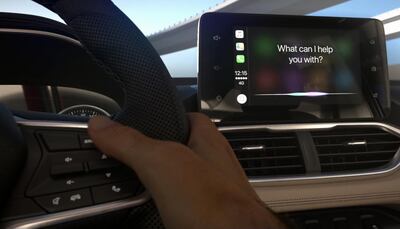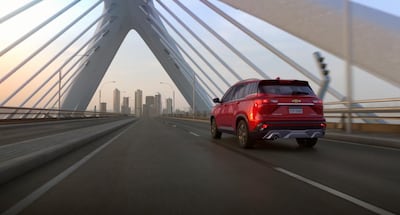Chevrolet’s new Captiva is a master of disguise, because it has managed to wrap affordable, comfortable, economical, entry-level motoring into a smart-looking SUV body.
Powered by a turbocharged, 1.5-litre, four-cylinder engine, it boasts specs that wouldn't be out of place if you were shopping for a Toyota Yaris or Nissan Micra, yet it seats up to seven people with the added versatility of increased ride height.
While it looks like an SUV, don’t be thinking of weekends in the desert with this one. It’s not an off-roader, merely a front-wheel drive that includes good ground clearance, so you can park it two wheels up on the kerb, but it's not fit for dune bashing.
It is, however, about the best bang-for-buck seven-seater you can find with genuine room for adults in all three rows. Those in the back have rear air-conditioning vents that its predecessor lacked, and no shortage of USB ports and Bluetooth connectivity throughout.
It’s not the liveliest car off the blocks when fully laden; remember, it has a hard-working 141bhp engine up front to push its 1,520 kilograms. It also has the dreaded CVT constant variable transmission in place of a regular auto or manual box.
However, what CVTs do offer is exceptional fuel economy. Our test time with the Captiva didn’t allow us to drain a full tank, which maybe proves the point, but General Motors claims that it gets an impressive 696km from its meagre 52 litres of fuel.
I was impressed with how little the gauge moved after five days and, given its engine spec and CVT transmission, I have no reason to doubt that claim.
The new Captiva is made by GM’s Chinese cousin, SAIC, and is badged as the MG Hector in India where it has been selling exceptionally well, the Baojun 530 in China, the Wuling Almaz in Indonesia and the Chevy-badged Captiva for the rest of the world.
It made its Middle East debut at last year’s Dubai International Motor Show and with economies of scale like that, you would expect it to be very competitively priced.
However, that third row raises the Captiva up a notch. While you would expect it to compete with the likes of the Toyota Rush, Hyundai Cretan and Honda HR-V on price, with the extra row and its interior dimensions, it’s actually up against models such as the seven-seater Nissan X-Trail, Honda CR-V and Toyota RAV4, but at a significantly better price point. The extra row of seats, however, is not standard on the Captiva, but comes as an extra cost option.
The top-line Premier model tested was well equipped with cup holders next to the USB ports in each row, a leather-wrapped steering wheel with buttons for operating the cruise control, a six-speaker audio system (four-speaker in the lower models) and the handsfree phone, as well as a six-way power-adjustable driver seat. The driver’s instruments include a seven-inch TFT digital colour screen in addition to a tablet-style, eight-inch infotainment touchscreen in the centre console for the Apple Carplay.
Despite the leather wheel, padded dash and leather armrests, most other surface touch points are hard plastic, befitting its price, while the seats are made from a durable two-tone fabric. While air-conditioning is standard across the full range, interestingly there’s no climate control option for the flagship model.
Outside, the new Captiva cuts a distinctive, almost coupe-like look, breaking the typical mould of this class with a chiselled nose, thanks to two large air inlets on either side at the front, and wraparound halogen headlamps with LED daytime lights that double as turn indicators. Strangely, though, there is no auto-off function for the lights, even on the Premier.
Sitting on 17-inch alloy wheels, the top model gets independent, multi-link rear suspension and it handles better when there's some weight in the back, which compensates the lack of feedback through the light power steering.
On the built-in safety front, the Captiva comes with a plethora of acronyms such as ABS (anti-lock brakes), EBD (electronic brake force distribution), BA (brake assist), TCS (traction control), TPMS (tyre pressure monitoring), ESC (stability control) and EPB (electronic parking brake for the Premier model only).
Additionally, there are airbags for the front passenger and driver across the full range and side airbags on the Premier but not curtain bags that normally run the full length of the cabin.
Overall, the new Captiva provides exceptional value for money in this segment and is worth a look for first-time buyers or those moving up from entry-level hatches. Perhaps in this climate, it’s also an option for those needing to scale down on price but not on space and features.






